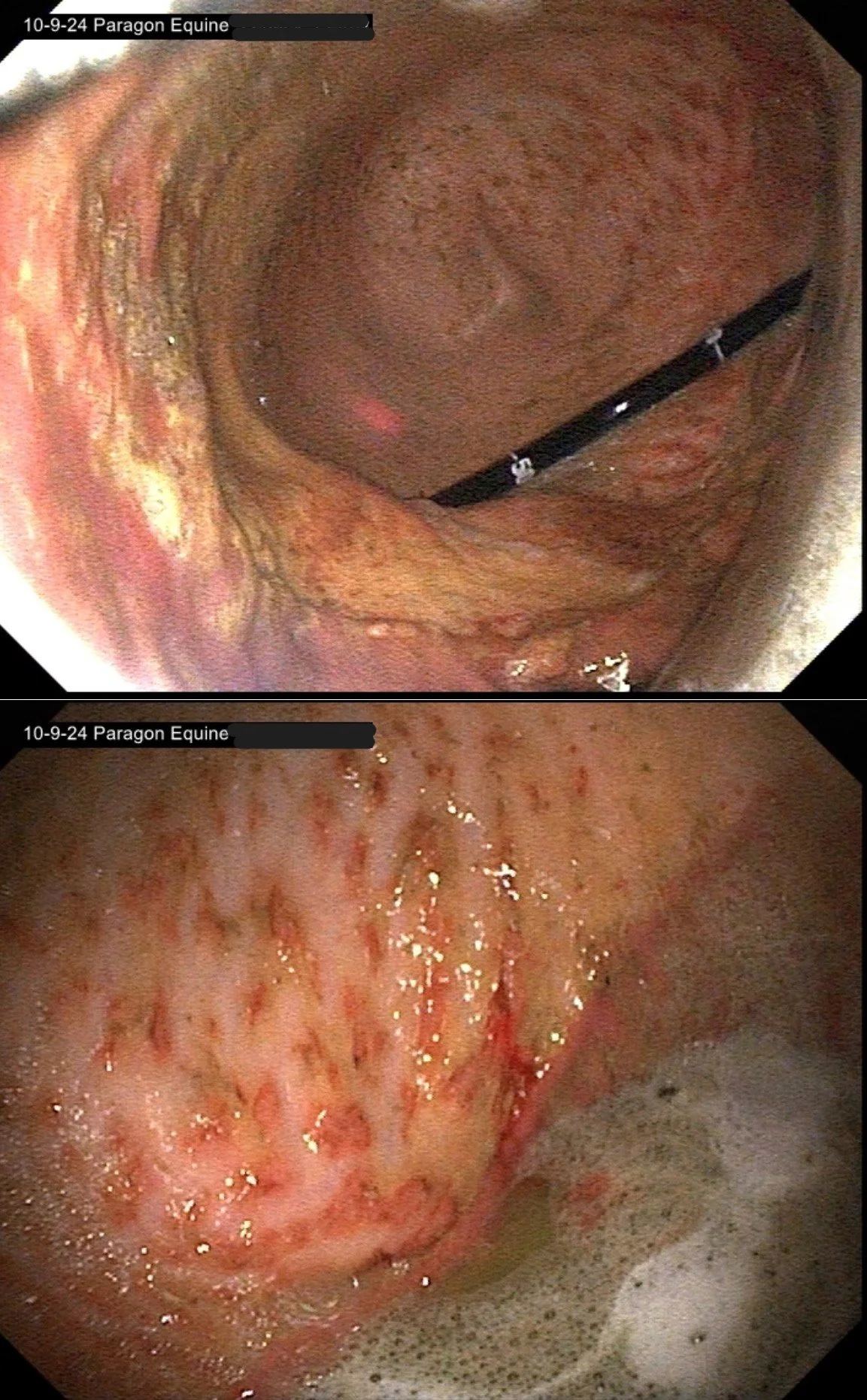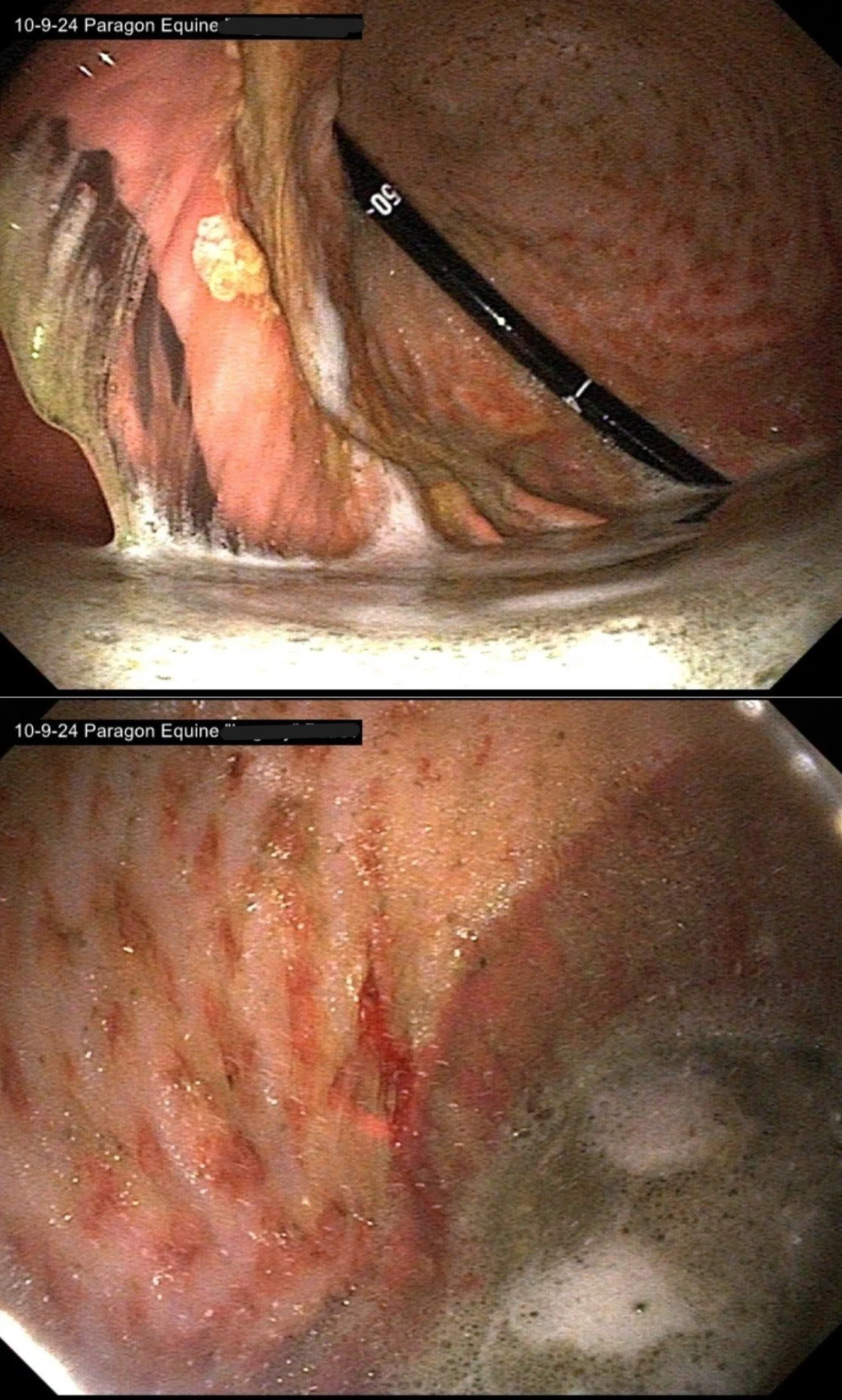
— Gastroscopy —
Equine gastroscopy is a non-invasive diagnostic procedure that uses a flexible endoscopic camera to examine the inside of your horse’s stomach and upper digestive tract. This procedure allows your veterinarian to identify and evaluate any potential issues or abnormalities, ensuring your horse’s well-being. Your horse’s unique digestive system can make them prone to certain conditions like gastric ulcers, which can impact their overall health and performance. Equine gastroscopy can also help diagnose many various conditions besides gastric ulcers, including inflammation, tumors, and foreign bodies. By identifying these issues early on, appropriate treatment plans can be developed, leading to improved health and well-being for your horse.
A gastric ulcer is the deterioration of the stomach lining caused by prolonged exposure to acids in the stomach. The signs of gastric ulcers in horses can be very subtle, so it’s important to know what to watch for. Horses often have a poor appetite or changes in eating habits, resistance to girthing, poor hair coat, decreased performance, and even colic. Knowing what to watch for can lead to a better recovery if caught early. Ulcers can be caused by a variety of factors, including feeding only a high-grain diet, stress, and long term use of NSAIDs. Ulcers can lead to colic if left untreated. Contact your veterinarian right away if you notice these symptoms in your horse.
Unlike in humans, ulcers in horses are not caused by bacteria, but are caused by acid buildup which erodes the lining of the stomach. Horses are designed to constantly graze on forage and must have a regular intake of roughage because the horse’s stomach is continually secreting acid. Gastric ulcers can result when the horse is not eating regularly, which leads to less feed in the stomach to neutralize the acid. Floating the teeth also prevents sharp edges from forming, which can cause pain and changes to both eating habits and performance.
During the gastroscopy procedure, your horse will be lightly sedated to ensure their comfort. A long, flexible tube with a camera attached, called an endoscope, is gently inserted through the nostril and guided down the esophagus into the stomach. The camera allows your veterinarian to visualize the stomach lining and identify any abnormalities. The entire process is quick, safe, and minimally invasive, and can be done in the comfort of your own barn.




